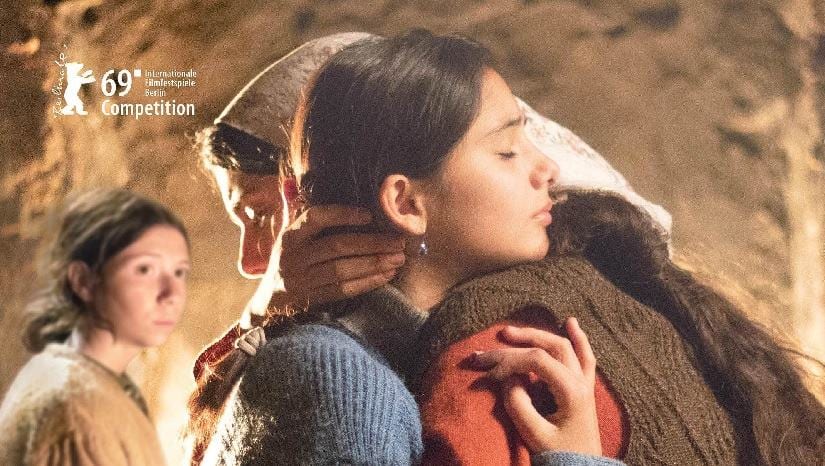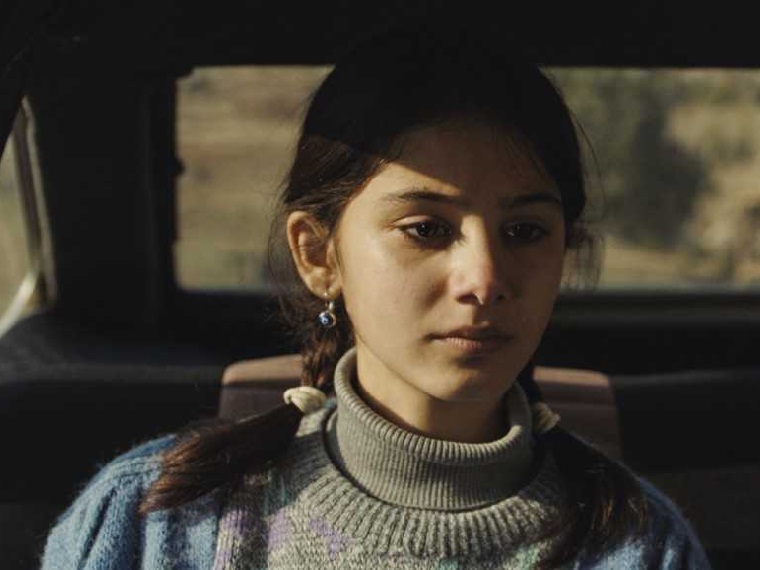In what is perhaps the last of its major award tally since its release, Alfonso Cuarón’s family drama Roma
took home three Oscars. For its honest portrayal of domestic help and for providing an affecting and tender look into their marginalised lives, Roma deserved to win every single award it was nominated for. Fittingly so, the annals of Internet are now littered with think pieces scrutinising every sociological and anthropological detail depicted in Roma. [caption id=“attachment_6186651” align=“alignnone” width=“825”] A still from Emin Alper’s Kiz Kardesler (A Tale of Three Sisters). Berlinale[/caption] As much as the maids Cleo and Adela’s lives are in focus, Roma doesn’t attribute any backstories to them, sticking loyal to the narrative structure that has them in focus. We know precious little about Cleo’s side of the story. But another movie accomplished that brilliantly. In the absence of a heavyweight like Netflix pulling out all the stops behind Roma, it is one movie you may never hear of. It is the promising Turkish director Emin Alper’s Kiz Kardesler – A Tale of Three Sisters. A the recently concluded Berlinale this year, Alper presented A Tale of Three Sisters in the competition section of the festival. Though the movie didn’t win a trophy, it unanimously won over some
critics
and split the
decision
of
others
. Alper’s movie is Chekhovian in a manner that it is bleak, yet depressingly beautiful, dark yet unfailingly hopeful. Suffice to say, Alper admitted to have been inspired by Chekhov’s short story
In the Ravine
. The movie is also similar to Cuarón’s Roma only in it that it focuses on the stories of women who once were employed as housemaids in a rich man’s family in a faraway town. It is a tale of three sisters Reyhan, Nurhan and Havva, played by Cemre Ebüzziya, Ece Yüksel and Helin Kandemir, set in a beautiful but economically backward village in northeastern Turkey where women’s lives are still shaped by the wills of men. In their large, woodfire-lit living room that doubles up as a kitchen, bedroom and dining room, the sisters sometimes bond and sometimes seethe at each other over their shared happiness and misery while churning Ayran, a Turkish buttermilk drink, in a large wooden cask. Reyhan is the oldest and wisest; yet, left to toil in a stranger’s family during her life-shaping adolescent years, she makes bad choices and ends up being pregnant (just like Cleo did in Roma). But Reyhan’s boss isn’t as sympathetic to her plight as Cleo’s and she’s sent back to her village to her poor father’s house where she tends to cattle and care for her baby, and eventually marries the well-meaning but socially inept shepherd, employed by her father. The youngest one Havva, as little as twelve she may be, already has her sights set and bags packed to head to the town to replace her sisters’ position in the rich household. The sisters have what may seem like achievable hopes since their desires are limited – just to become a housemaid – but it’s yet a hard slog to accomplish, even the longing for a slightly better life. Nevertheless, the three of them are shown as survivors, fighting for (and sometimes with) each other in little heartrending ways, in a way only human beings with limited means are likely to bond with each other. Perhaps in presenting the lives of these women, both movies are complicit in being passive spectators without presenting critical viewpoints or posing significant questions. For instance, in A Tale of Three Sisters, the Turkish tradition of besleme (foster girl), in which a rich family adopts a girl from a poor one and essentially treats her as a domestic help, is dealt with. “Although they were encouraged to call their benefactors ‘mother’ and ‘father,’ they were never treated as real members of the family. They always had a much lower status. Having been raised by such a woman myself, I was always stunned by this situation,” Alper said in an
interview
for Cineuropa. In effect, both Cuarón and Alper were inspired to make movies about the stay-in nannies who raised them. Yet, a commentary on the tradition itself takes a backseat while Alper’s film deals with patriarchy, strict gender norms and hopelessness of life in a village. Along similar lines, in portraying the near-perfect and harmonious mistress-of-the-house–domestic-help relationship, Roma has an unmistakably fairy-tale quality to it. Cuarón relied on the timeframe of 1970s Mexico, blending the hard-hitting political realities in the tense backdrop of the student protest movement, served with a slice of domesticity. Alper’s film is rooted in personal hopes and tragedies and feels timeless, it could be imagined to have happened anytime in Turkey. As geographically dissimilar as they are, Roma and A Tale of Three Sisters have their hearts in harmony and share a central narrative significant to the lives of marginalised women. Only, it’s disheartening A Tale of Three Sisters may not find a widespread audience.
A still from Emin Alper’s Kiz Kardesler (A Tale of Three Sisters). Berlinale[/caption] As much as the maids Cleo and Adela’s lives are in focus, Roma doesn’t attribute any backstories to them, sticking loyal to the narrative structure that has them in focus. We know precious little about Cleo’s side of the story. But another movie accomplished that brilliantly. In the absence of a heavyweight like Netflix pulling out all the stops behind Roma, it is one movie you may never hear of. It is the promising Turkish director Emin Alper’s Kiz Kardesler – A Tale of Three Sisters. A the recently concluded Berlinale this year, Alper presented A Tale of Three Sisters in the competition section of the festival. Though the movie didn’t win a trophy, it unanimously won over some
critics
and split the
decision
of
others
. Alper’s movie is Chekhovian in a manner that it is bleak, yet depressingly beautiful, dark yet unfailingly hopeful. Suffice to say, Alper admitted to have been inspired by Chekhov’s short story
In the Ravine
. The movie is also similar to Cuarón’s Roma only in it that it focuses on the stories of women who once were employed as housemaids in a rich man’s family in a faraway town. It is a tale of three sisters Reyhan, Nurhan and Havva, played by Cemre Ebüzziya, Ece Yüksel and Helin Kandemir, set in a beautiful but economically backward village in northeastern Turkey where women’s lives are still shaped by the wills of men. In their large, woodfire-lit living room that doubles up as a kitchen, bedroom and dining room, the sisters sometimes bond and sometimes seethe at each other over their shared happiness and misery while churning Ayran, a Turkish buttermilk drink, in a large wooden cask. Reyhan is the oldest and wisest; yet, left to toil in a stranger’s family during her life-shaping adolescent years, she makes bad choices and ends up being pregnant (just like Cleo did in Roma). But Reyhan’s boss isn’t as sympathetic to her plight as Cleo’s and she’s sent back to her village to her poor father’s house where she tends to cattle and care for her baby, and eventually marries the well-meaning but socially inept shepherd, employed by her father. The youngest one Havva, as little as twelve she may be, already has her sights set and bags packed to head to the town to replace her sisters’ position in the rich household. The sisters have what may seem like achievable hopes since their desires are limited – just to become a housemaid – but it’s yet a hard slog to accomplish, even the longing for a slightly better life. Nevertheless, the three of them are shown as survivors, fighting for (and sometimes with) each other in little heartrending ways, in a way only human beings with limited means are likely to bond with each other. Perhaps in presenting the lives of these women, both movies are complicit in being passive spectators without presenting critical viewpoints or posing significant questions. For instance, in A Tale of Three Sisters, the Turkish tradition of besleme (foster girl), in which a rich family adopts a girl from a poor one and essentially treats her as a domestic help, is dealt with. “Although they were encouraged to call their benefactors ‘mother’ and ‘father,’ they were never treated as real members of the family. They always had a much lower status. Having been raised by such a woman myself, I was always stunned by this situation,” Alper said in an
interview
for Cineuropa. In effect, both Cuarón and Alper were inspired to make movies about the stay-in nannies who raised them. Yet, a commentary on the tradition itself takes a backseat while Alper’s film deals with patriarchy, strict gender norms and hopelessness of life in a village. Along similar lines, in portraying the near-perfect and harmonious mistress-of-the-house–domestic-help relationship, Roma has an unmistakably fairy-tale quality to it. Cuarón relied on the timeframe of 1970s Mexico, blending the hard-hitting political realities in the tense backdrop of the student protest movement, served with a slice of domesticity. Alper’s film is rooted in personal hopes and tragedies and feels timeless, it could be imagined to have happened anytime in Turkey. As geographically dissimilar as they are, Roma and A Tale of Three Sisters have their hearts in harmony and share a central narrative significant to the lives of marginalised women. Only, it’s disheartening A Tale of Three Sisters may not find a widespread audience.
A Tale of Three Sisters: After Alfonso Cuaron's Roma, an equally stirring Turkish version worth exploring
Prathap Nair
• March 3, 2019, 12:35:34 IST
As geographically dissimilar as they are, Roma and A Tale of Three Sisters have their hearts in harmony and share a central narrative significant to the lives of marginalised women. Only, it’s disheartening A Tale of Three Sisters may not find a widespread audience.
Advertisement
)
End of Article